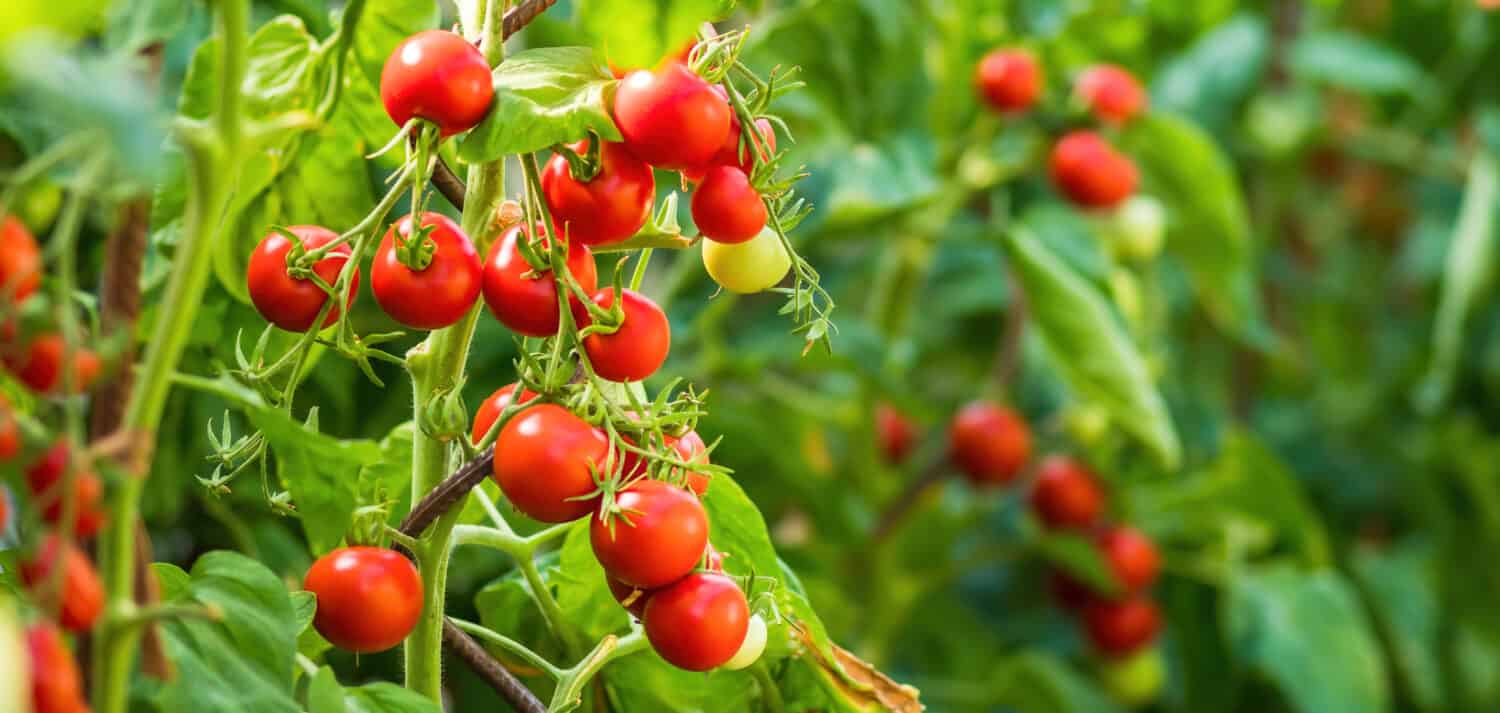Tomatoes are a well-liked and adaptable fruit that gardeners grow all around the world. Although a lot of gardeners concentrate on the above-ground development of tomato plants, understanding their root systems is just as crucial.
Whether you’re planning on making a tasty compote or just would like some home-grown tomatoes for your sandwiches and salads, these helpful growing tips will ensure your plant thrives!
How Deep Do Tomato Roots Grow?
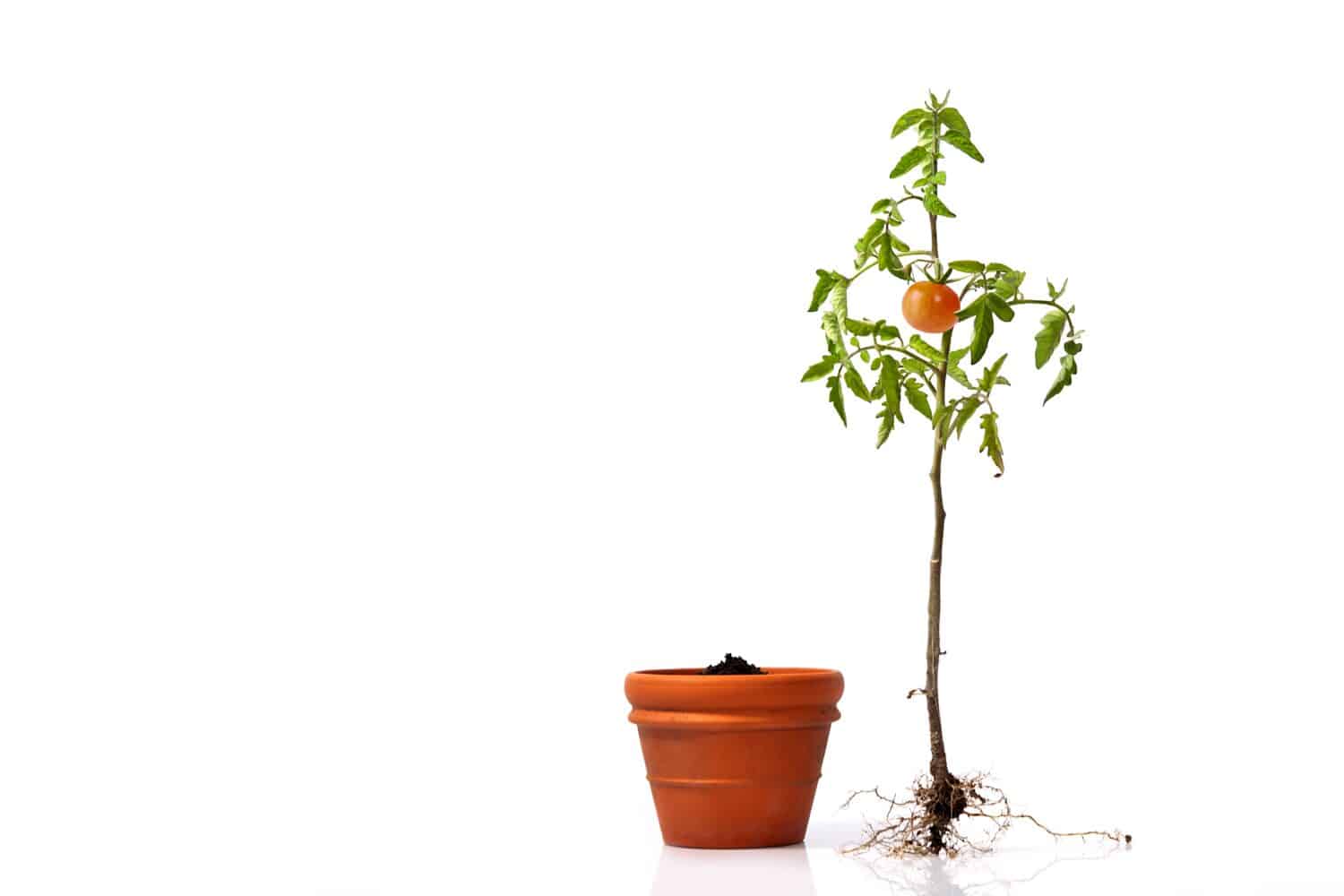
Tomato roots can grow up to two feet long!
©Mabeline72/Shutterstock.com
The particular tomato variety, the soil’s characteristics, and the availability of nutrients are only a few of the variables that might affect how deep tomato roots can grow. Tomato roots typically have low to medium-deep root systems.
Usually, tomato plants form shallow roots in the upper 12 to 18 inches of soil. The upper few inches of soil contain nearly all of the root mass. Tomato roots have a tendency to spread horizontally rather than develop deeply.
Utilizing the dirt, they spread out horizontally in quest of moisture and nutrients. Water and nutrients are taken up by tomato plants’ feeder roots, which are small, absorbent roots. The uppermost layer of soil contains the majority of these feeder roots, which are also where they are most vigorous.
What Can Affect a Tomato Plants Root Depth?
Unfortunately, we as gardeners can’t always just dig a hole and hope for the best. There are a few factors that can affect how deep you should plant the roots of a tomato plant.
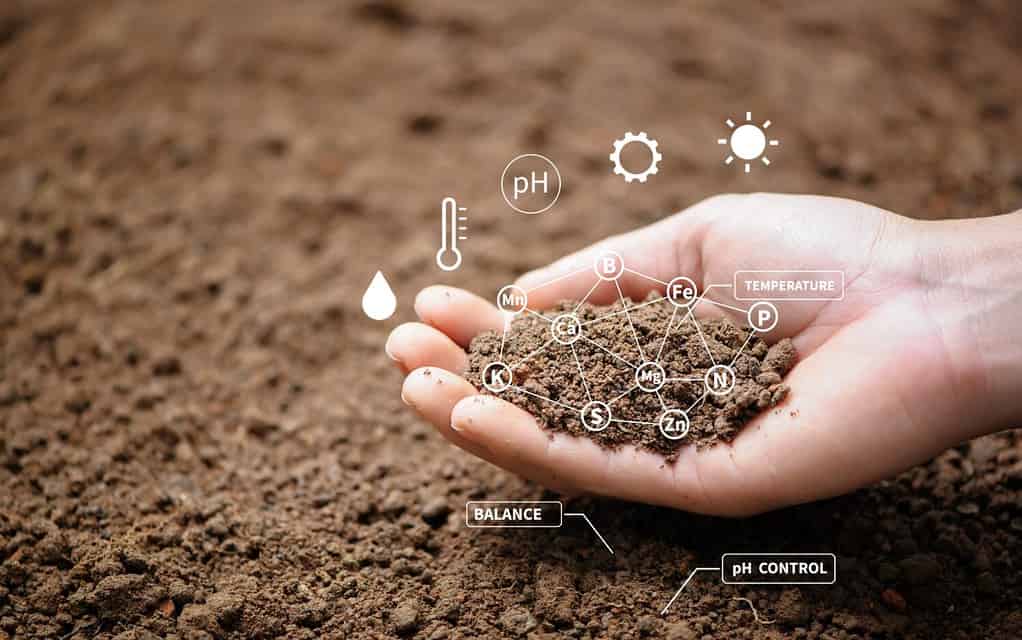
Many nurseries carry tomato-specific soil.
©Deemerwha studio/Shutterstock.com
Soil Conditions
Root development is significantly influenced by the soil. A broader area of soil can be explored by roots when the soil is loose, well-draining, and has enough organic matter. Root penetration may be impeded by compacted or dense clay soils.
Furthermore, environmental elements like temperature and accessibility to water have an impact on the depth and growth of roots.
Nutrients in the Soil
Root development may be impacted by the nutrients that are available in the soil. For proper growth of the roots, optimum nutrient levels, particularly phosphorus, are crucial. The root system and general health of the plant may be limited by poor soil fertility or nutritional deficits.
Trellising
Tomato plants that have been pruned, staked, or trellised may have less wide root spread as a result since the plants stand more erect and the roots are contained inside a smaller space. It’s vital to remember that trimming and staking techniques have little to no impact on the depth of the roots.
Access to Water
Root growth is also influenced by soil water and moisture supply. Tomato roots usually go toward damp regions. The roots could stay closer to the ground’s surface if the earth’s moisture is shallow.
On the other hand, the roots may grow deeper if there is regular deep irrigation or moisture within the soil profile.
Tips For Growing Tomatoes
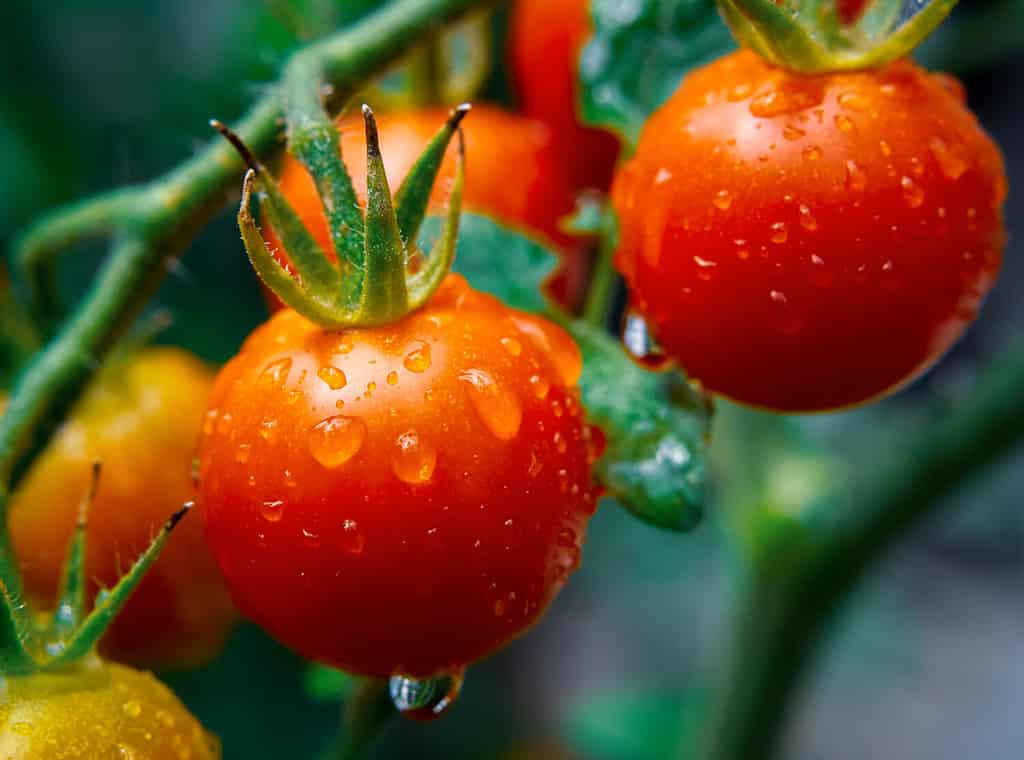
Tomatoes need a ton of nourishment, since they “eat” a lot.
©Shannon Birchler/Shutterstock.com
Type of Tomato
Tomatoes’ roots can vary in depth. The roots are typically shallow to fairly deep. Shallower roots are more common in determinate cultivars, which have tighter growth patterns. Indeterminate cultivars, on the other hand, which continue to grow and produce during the season may form significantly deeper roots.
Local Conditions
Root depth can be influenced by environmental conditions, including climate and stress due to drought. Tomato roots may cluster in topsoil or other moister environments as a result of heat and drought stress.
The formation of deeper roots may be aided by lower temps and constant soil moisture.
Tips For Growing Tomatoes
Now that you know all about what the roots need to thrive, here are some helpful tips for growing tomatoes.
Pick the Right Variety
Indeterminate and determinate tomatoes are the two primary types. While determinate tomatoes mature almost exclusively simultaneously, indeterminate tomatoes bear fruit constantly during the growing season.
Determined tomatoes are ideal for container gardening because they like to mature at a smaller size and are excellent for preserving or preparing sauce. It is better to pick tomatoes continuously throughout the summer from indeterminate plants, which consist of several heirloom kinds.
Create a Breeze

Some farmers will add giant fans to their outdoor gardens.
©Alliance Images/Shutterstock.com
If you’re planting tomatoes outside, disregard this tip. To make robust stems, tomato plants need to sway and move, preferably with natural wind. This happens outside, but if you are planting your tomato roots or seeds indoors, you will need to create some sort of air circulation.
Twice daily, switch on a fan for five to ten minutes to produce a breeze. An additional choice is to lightly run your hand repeatedly across the tomato plants for a couple of minutes, at least twice per day.
When You Plant Matters
To plant tomatoes outdoors, it is better to hold off until nighttime lows are above 50 degrees. Take your plants outdoors to adjust them to the environment by extending their time each day, starting with a few minutes at first.
The optimum period to plant your tomato seedlings outdoors is around mid-May, or following the final spring frost.
Provide Plenty of Light
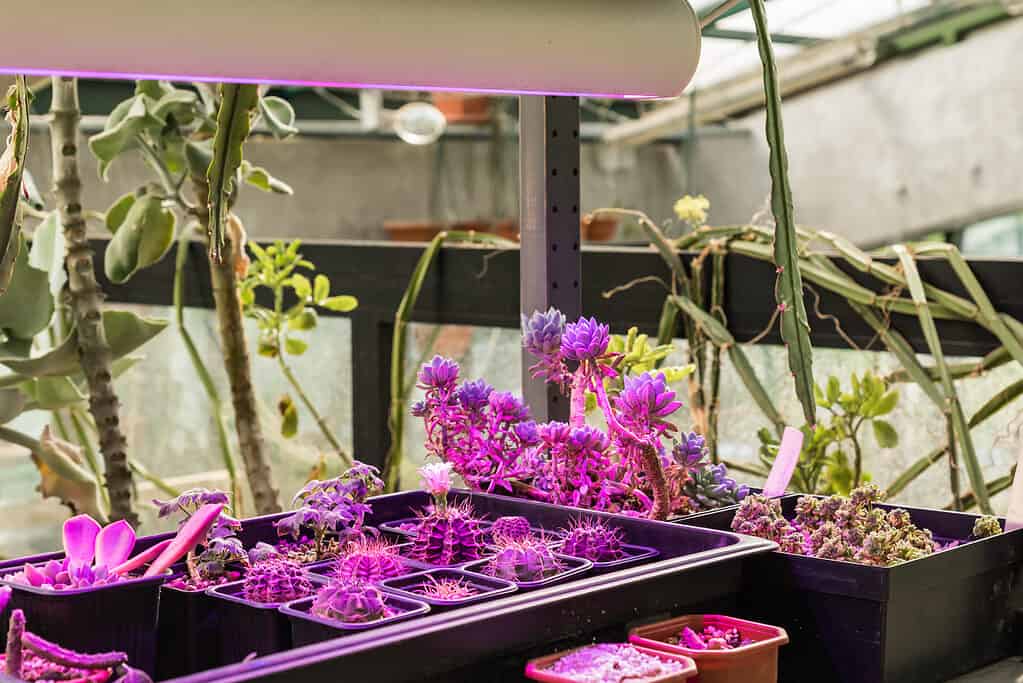
LED lights are used to grow a variety of plants indoors.
©Irina Kvyatkovskaya/Shutterstock.com
The roots and seedlings of tomatoes require powerful, bright sunlight. Your best bet is to utilize some sort of LED plant light for 14 to 18 hours each day. If you can, grow your tomatoes in a greenhouse!
Put seedlings only a few inches away from fluorescent grow lamps to prevent lanky growth. As the sprouts grow, you will have to adjust the lighting accordingly. When the time comes to plant them outside, place them in the area of your vegetable garden that receives the most sunlight.
Pick a spot in the garden where the plants will get a minimum of six to eight hours of direct sunlight when you’re planting. Sunlight is essential for tomato growth and fruit production.
Spacing the Roots and Seedlings
Thinning the seeds of tomatoes to one robust plant per cell or tiny pot will give them plenty of space to branch out. To allow tomato plants ample room, pluck weaker, lesser seedlings to the benefit of the greatest grower.
Their growth is impeded by overcrowding, which puts a strain on plants and may subsequently result in illness. Once tomato seedlings receive the initial set of true leaves, transfer them into individual four-inch pots. Seedlings should be hardened off before being planted in the garden.
Utilize a Tomato Cage
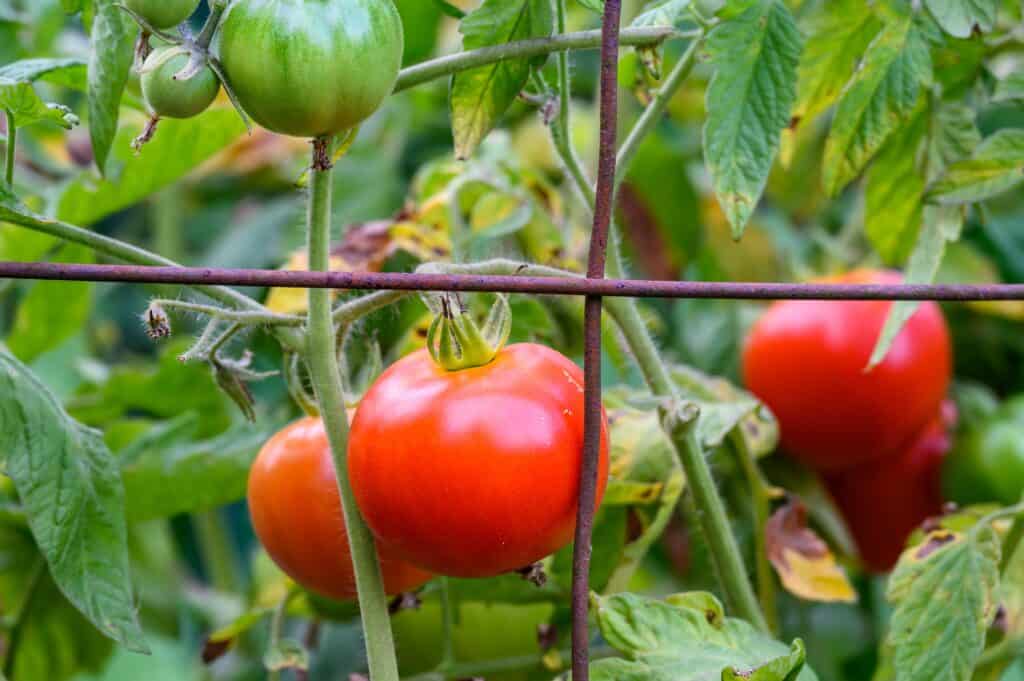
Tomato cages prevent the weight of the fruit from weighing down the entire plant.
©knelson20/Shutterstock.com
When your tomato plants are 10 to 12 inches tall, give them a little assistance. For keeping your plants erect, use vegetable cages, wire trellises, wooden or steel stakes with ties, or other sturdy supports.
Although poles or cages may help determinate tomatoes sit upright after they bear fruit, indeterminate tomatoes often require greater support than determinate kinds.
Mulching Tomatoes
Wait until the earth has had an opportunity to warm up before laying mulch. Mulching not only stops soil and disease from reaching the plants and preserves water but it also shadows and regulates the soil.
You can apply a thin layer of mulch to preserve moisture once it’s warm outside.
Create Nourishing Soil
Prior to planting, check that the soil can support tomatoes in the best possible way. The ideal soil pH level for tomatoes is in the range of 6.2 and 6.8. You can perform a soil test at your neighborhood extension office or check the pH of the soil at home.
Any nutrient deficits will also be discovered by a soil test. Before you plant tomatoes, incorporate fertilizer into the soil. Mid-season is also a good time to side-dress crops with compost to add nourishment.
Another choice is to fertilize tomatoes every other week, beginning at the time of planting with a fertilizer made especially for them. Because they consume a lot of food, tomatoes need a consistent supply of nutrients.
Plant Deep!

Deep planting makes a world of difference when planting most fruits or vegetables.
©Sofiaworld/Shutterstock.com
Not planting tomatoes deeply enough is one of the major errors that tomato farmers make. Tomato plants benefit in two important ways from the technique of deep planting. It aids in protecting them for the upcoming protracted and sweltering season of growth.
A deep root system dries out more slowly. Additionally, it gives plants more stability so they can withstand wind, copious rain, and violent summer storms. All of those tiny hairs on the primary stem develop into underground roots when the plant is planted in soil.
Additional growth will emerge from your tomato plant above the earth as the root system gets more prominent. In order for a plant to grow and survive, its roots are crucial in assisting with water and nutrient absorption. Having more roots results in larger, better tomatoes!
Thank you for reading! Have some feedback for us? Contact the AZ Animals editorial team.

